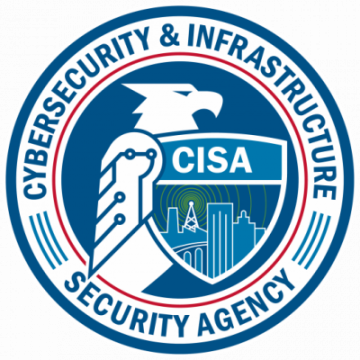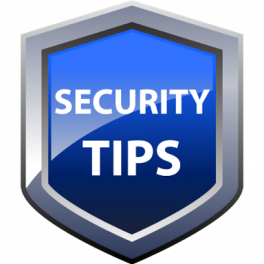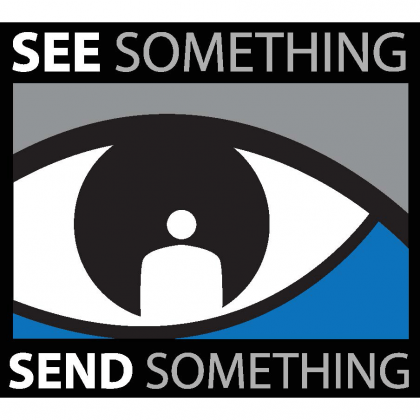|
| |
VA Lobby Day and Presidential Inauguration
Resources, Best Practices, and a Reminder to Stay Vigilant
|
|
|
| |
,
In light of the events at the US Capital last week, upcoming Lobby Day 2021, and the pending Presidential Inauguration, VFC Shield reminds members of available resources, best practices, and to always remain vigilant.
VFC Statement on the 1st Amendment
The VFC recognizes that United States Citizens have constitutionally protected rights to assemble, speak, and petition the government. The VFC safeguards these first amendment rights, and reports on only those activities where the potential use of rhetoric and/or propaganda could be used to carry out acts of violence. Additionally, potential criminality exhibited by certain members of a group does not negate the constitutional rights of the group itself or its law-abiding participants to exercise their individual liberties under the First Amendment to the United States Constitution.
|
|
|
|
| |
CISA - Resources for Civil Unrest Threat
 | |
CISA offers a suite of resources to facilitate the sharing of threat and incident information, assist in decision- making, and enhance the security capabilities of critical infrastructure facilities.
Check out this PDF for great information on SAR Reporting, Bombing Prevention, Securing Soft Targets and a bevy of other resources.
|
|
|
|
|
| |
CISA - Personal Security Considerations
| |
 |
In recent months, the U.S. has experienced civil unrest across various jurisdictions. Due to continued sociopolitical issues, there remains a potential for further unrest. Domestic terrorists and other violent extremist actors may continue to leverage peaceful protests to attempt to incite hate, destroy critical infrastructure, and inflict bodily harm. Extremist actors have also used rhetoric to attempt to threaten high- profile individuals associated with the management and operation of critical infrastructure. To reduce risk, the Cybersecurity and Infrastructure Security Agency (CISA) recommends that individuals, particularly those with higher profile status, implement basic security measures to increase personal safety.
Check out this resource for Behavioral Indicators, Personal Security Measures, and other great information to keep you and your family safe.
|
|
|
|
| |
| |
If you plan to participate in demonstrations:
- Make sure you know where the exit points are.
- Consider leaving if the crowd seems to be getting out of control.
- Wear closed-toe shoes and keep the laces tied to prevent tripping.
- Avoid standing on or near structures that could collapse.
- Walk around crowds rather than pushing through them.
- Leave early or late to avoid the rush when the event is over.
- If you're caught in a moving crowd, walk sideways or diagonally across it to work your way out.
- Keep your phone charged and on. Program it to vibrate as well as ring.
If you are a business owner concerned about civil unrest:
1. Stay informed
Depending on where you live, protest organizers are required to get a permit before demonstrating publicly. Most protesters advertise those events to garner more participation and coordinate the protest with police officials. Keep up to date on events in your community by contacting local officials or viewing your city’s website for posted information on upcoming events. Moreover, stay abreast of emergency protocols in your area.
2. Reduce building weaknesses
Determine what makes your storefront more vulnerable. Are there dark alleys and large windows? A building should have adequate lighting at all entrances along with security cameras with alarms to capture intruders on tape and notify police automatically. Windowless doors made from steel and deadbolts help to deter vandalism.
4. Close your store
Sometimes closing your store is the best decision to ward off losses. Your prime concern is the health and safety of employees and consumers, as well as preventing physical damage to property. You can also adjust store hours and reduce the number of employees who work based on city curfews. Gain guidance from governing officials as to the safest time to remain open.
5. Revise your schedule
If you expect deliveries, reschedule them for a different day or week. You also don’t want to be meeting with clients or staff when a protest is ongoing. Keep staff members informed of safety plans, so they know what to expect.
6. Call the police
If trespassers look suspicious and won’t leave your property, get police assistance immediately. It’s not advisable to take matters into your own hands or use firearms as a means to protect your premises.
7. Review your insurance policy
Make sure your business policy includes coverage for property damage incurred during a protest. You should meet with your insurance agent to verify what exactly your liability and property insurance policy covers.
|
|
| |
|
| |
Suspicious Activity Reporting
|
|
|
|
| |
Signs of Terrorism1. Surveillance Someone recording or monitoring activities. This may include the use of cameras, note taking, drawing diagrams, annotating on maps, or using binoculars or other vision-enhancing devices. 2. Elicitation People or organizations attempting to gain information about military operations, capabilities, or people. Elicitation attempts may be made by mail, email, telephone, or in person. This could also include eavesdropping or friendly conversation. 3. Tests of Security Any attempts to measure reaction times to security breaches, attempts to penetrate physical security barriers, or monitor procedures in order to assess strengths and weaknesses. 4. Funding Suspicious transactions involving large cash payments, deposits, or withdrawals are common signs of terrorist funding. Collections for donations, the solicitation for money and criminal activity are also warning signs. 5. Supplies Purchasing or stealing explosives, weapons, ammunition, etc. This also includes acquiring military uniforms, decals, flight manuals, passes or badges (or the equipment to manufacture such items) and any other controlled items. 6. Impersonation People who don’t seem to belong in the workplace, neighborhood, business establishment, or anywhere else. This includes suspicious border crossings, the impersonation of law enforcement, military personnel, or company employees is also a sign. 7. Rehearsal Putting people in position and moving them around according to their plan without actually committing the terrorist act. An element of this activity could also include mapping out routes and determining the timing of traffic lights and flow. 8. Deployment People and supplies getting into position to commit the act. This is the person’s last chance to alert authorities before the terrorist act occurs.
|
|
|
|
| |
Report Suspicious Activity
Click on the link below to submit a suspicious activity report directly to the Virginia Fusion Center.
|
|
|
|
|
|
| |
This document is an OPENSOURCE alert product. Redistribution is encouraged.
|
|
|
|
| |
Not a SHIELD Member?
Sign up today.
|
|
|
|
|
|
| |
Virginia Fusion Center
© 2025 Virginia Fusion Center All rights reserved.
----
You have received this email because our records indicate that is subscribed to "All Sector Bulletins" Should you wish to unsubscribe please click the link below.
unsubscribe
|
|
|








